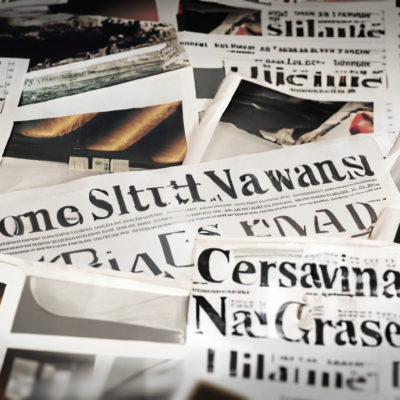There are certain events that leave a mark on your memory, events that you can recall with pinpoint accuracy even years after they have occurred, events where you’ll be able to recall precisely where you were and what you were doing when “it” happened. For most people, the first encounter with an AI like ChatGPT is one such event, especially if you were in the midst of your school or university education at the time. The introduction to this technology represents a significant moment, a juncture where the past and future of writing collide.
The new possibilities are both a blessing and a curse: the potential to use ChatGPT seems limitless, but have you ever read a manual on how to use it effectively? Probably not. This is precisely why we have created this guide – to furnish you with a clear path on how to make the most of ChatGPT’s abilities.
Understanding Artificial Intelligence
But before we delve into the details, let’s take a step back and take a look at what artificial intelligence truly is. In simple terms we can say “artificial intelligence is a collection of ideas, technologies, and techniques that pertain to the ability of a computer system to perform tasks that typically require human intelligence” (Tshepo Tshabalala, JournalismAI).
Mastering the CRAFT Methode
When it comes to AI-powered text generation, it’s important to remember that you approach a machine the best with a thoughtful strategy. The CRAFT method was introduced by Johannes Skov Andersen at the Forum for Member Organisations 2023. Johannes Skov Andersen is editor and head of office for digital stories at Politiken, a major newspaper in Denmark, the CRAFT method is his personal favourite method to create a ChatGPT prompt. CRAFT stands for:
CONTEXT
First things first, you need to set the stage. The context matters to create an effective ChatGPT prompt, so you need to start by defining the context clearly. Specify the topic and sources you want ChatGPT to draw from. In our imaginary example, you have an upcoming school assignment centred around Franz Kafka’s novella, “The Metamorphosis”. Copy and paste the novella into your prompt. If the text is too long, add bits of it. The more details you give, the better the AI’s answers will be.
ROLE
Think of this like setting the mood. Think about if you want ChatGPT to tell you a story or just give you facts. You can ask it to sound all professional, or just chat casually. In this example, you could ask “imagine you are a student” and ask for a formal tone for an academic assignment.
ACTION
Outline the action needed from ChatGPT. Whether it’s answering a question, providing a summary, or generating recommendations, be explicit about your expectations. Also, indicate your preference for utilising bullet points for improved structure. In this case, you want a summary.
FORMAT
Consider the format of your prompt. You can ask for bullet points, steps, or paragraphs based on your preferences. Formatting, such as bullet points, can make responses easier to read, while longer paragraphs may be necessary for detailed explanations. In this case, you are asking for a summary in bullet points.
TARGET AUDIENCE
Tell ChatGPT about the intended audience of the response – in this case, yourself, so you are aiming for an academic tone to understand a school assignment. By specifying the target audience and the corresponding formality level, you ensure that the provided analysis is relevant and appropriate for the school environment. By keeping the CRAFT principles in mind – Context, Role, Action, Format, and Target Audience – you can create prompts that get responses that fit your needs. Just remember, if you are not satisfied with the answer, delete the chat and change your prompt. Repeat this until you have the answer you need. And don’t use ChatGPT to do your homework, use it instead to help you with your homework.
Privacy and Ethical Considerations
When you use ChatGPT it’s important to note that all the input you provide to ChatGPT is not only retained but might also be used for training purposes and could be accessed by other people (to be sure this is not happening to you, use the option to disable this function under Settings > Data controls > Chat history & training).
A glimpse into the future with programmes like ChatGPT can be found in this article, it speaks about the ability to transform industries from healthcare to entertainment by automating tasks, facilitating personalised user experiences and even contributing to breakthrough research. If you want to dig deeper and to learn more about how to effectively use AI in journalism, try the online programme JournalismAi Discovery or sign up for the online course JournalismAi Academy for Small Newsrooms.
Saskia Reimann
This article was written as part of the European Youth Press Forum for Member Organisations 2023, which focused on AI in journalism. Special thanks to Jonathan Hendrickxx for organising this wonderful event and to Tshepo Tshabalala and Johannes Skov Andersen for their valuable input to the discourse on AI in journalism.
Photo: Andrew Neel via Pexels


